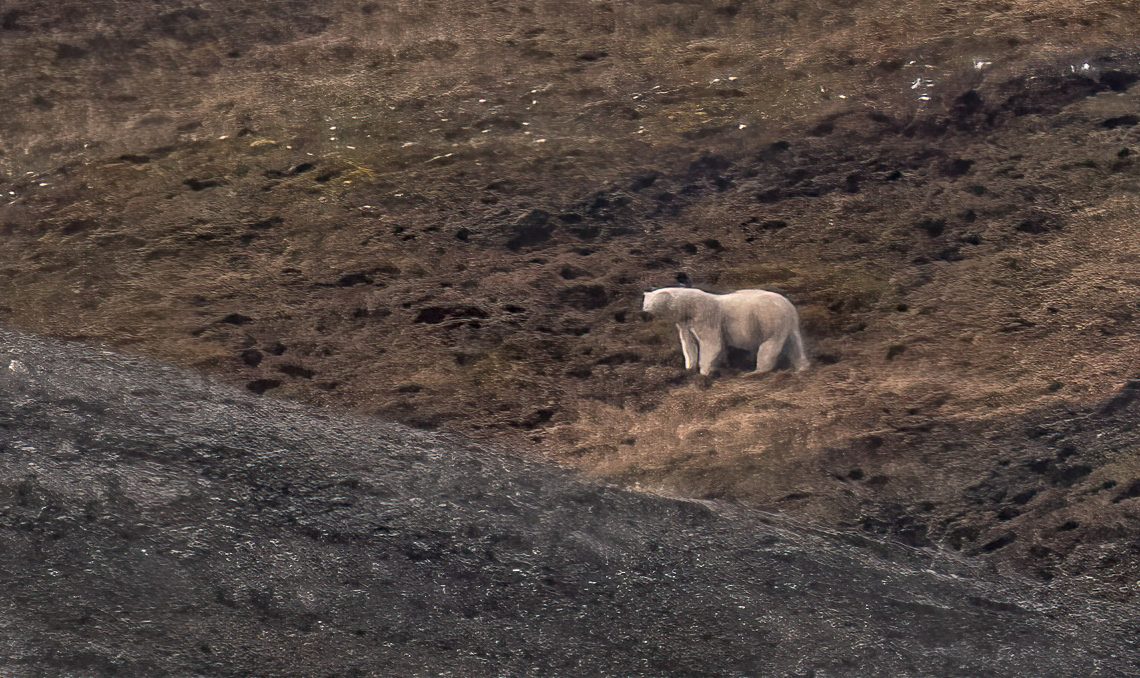
Camp Berantz
Disembarkation day. It was an early start, cases outside the room by 7am, out of the cabin at 8 am and ready to head onto the bus around 8.40 am. A quick tour to Camp Berantz before being dropped at the airport.
To be honest, none of us really knew what Camp Berantz was! Or why we were going there. But I have to say it turned out to be quite a special moment.
List to my audio introduction above
An Arctic activities centre where we got to meet and cuddle huskies. Retired and very friendly huskies! A short talk about the dogs and the sleds they use followed by lots of cuddling and the huskies liked it as much as we did.
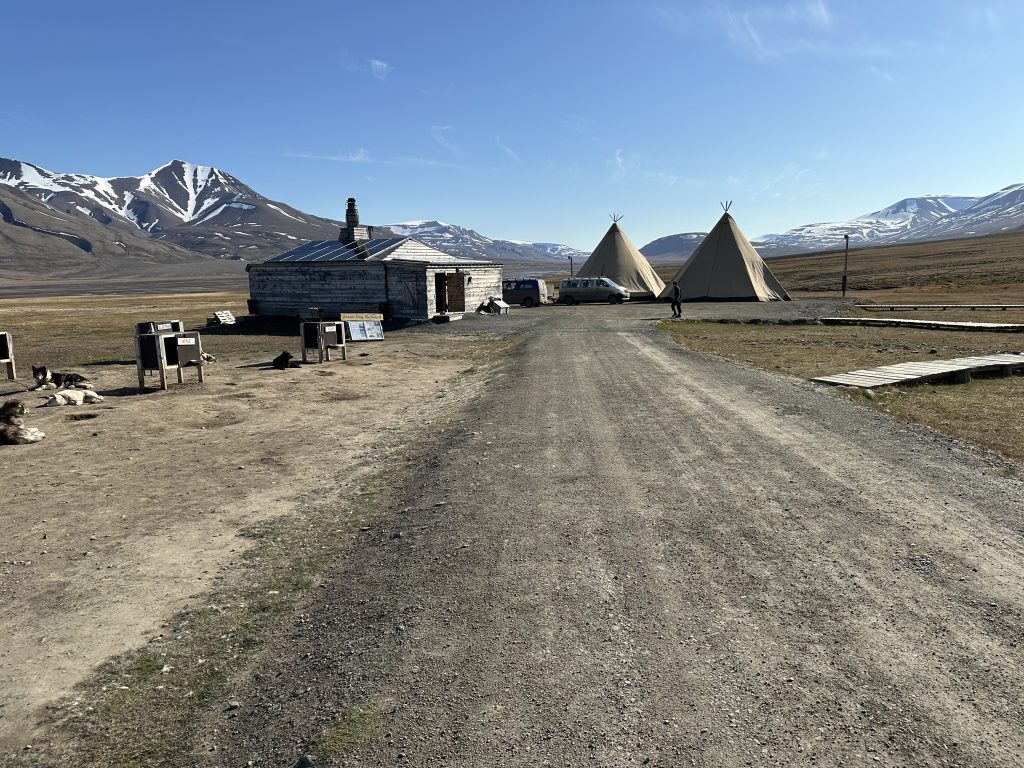
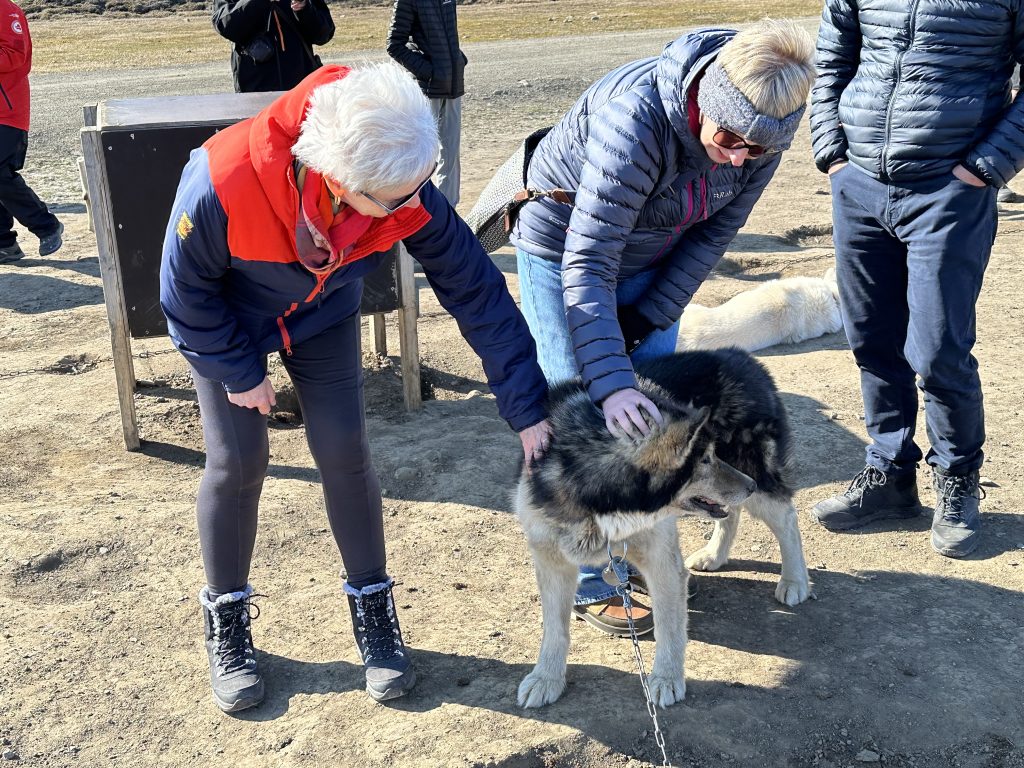
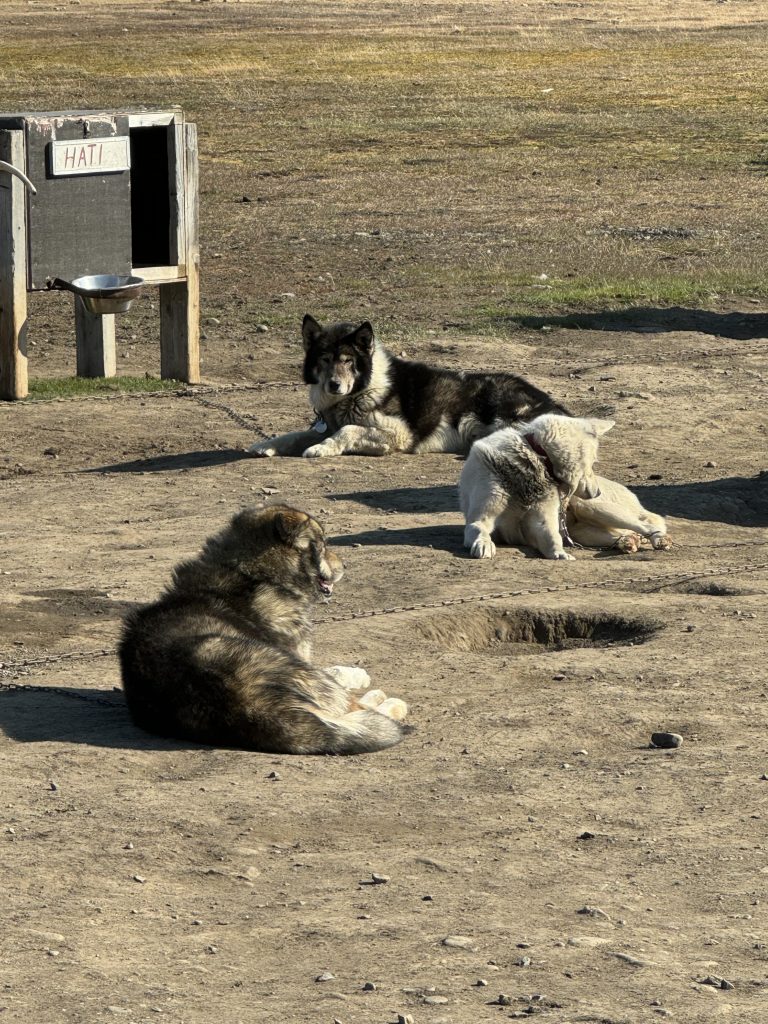
But that was not the best bit. We headed into a wooden wigwam for warm drinks, freshly made pancakes and blackcurrant jam, huddled around a central fire and an excellent Polar Bear presentation from our lovely French speaking guide. We learnt more about them in that 20 minutes or so than we had all trip; the different types of polar bears, their movements around the region, how their habits have changed and all about the bears wandering into Longyearbyen in the dark days of winter and the challenges that brings. Many facts we didn’t know including that bears have a bacteria on their noses that is fatal to humans.
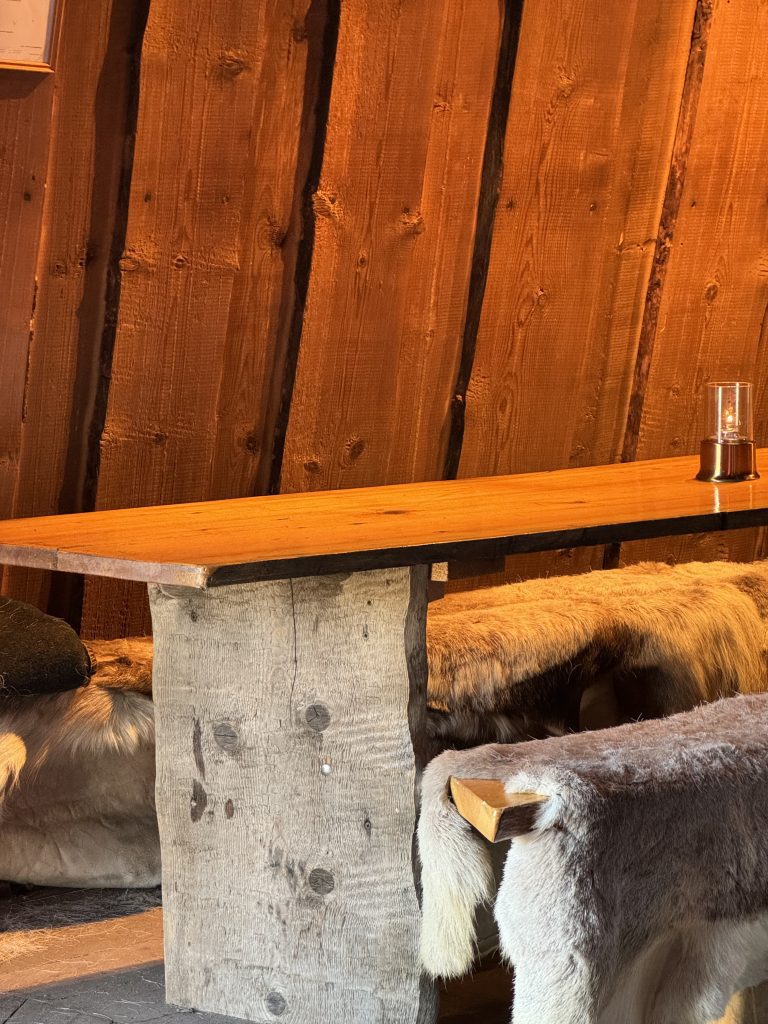
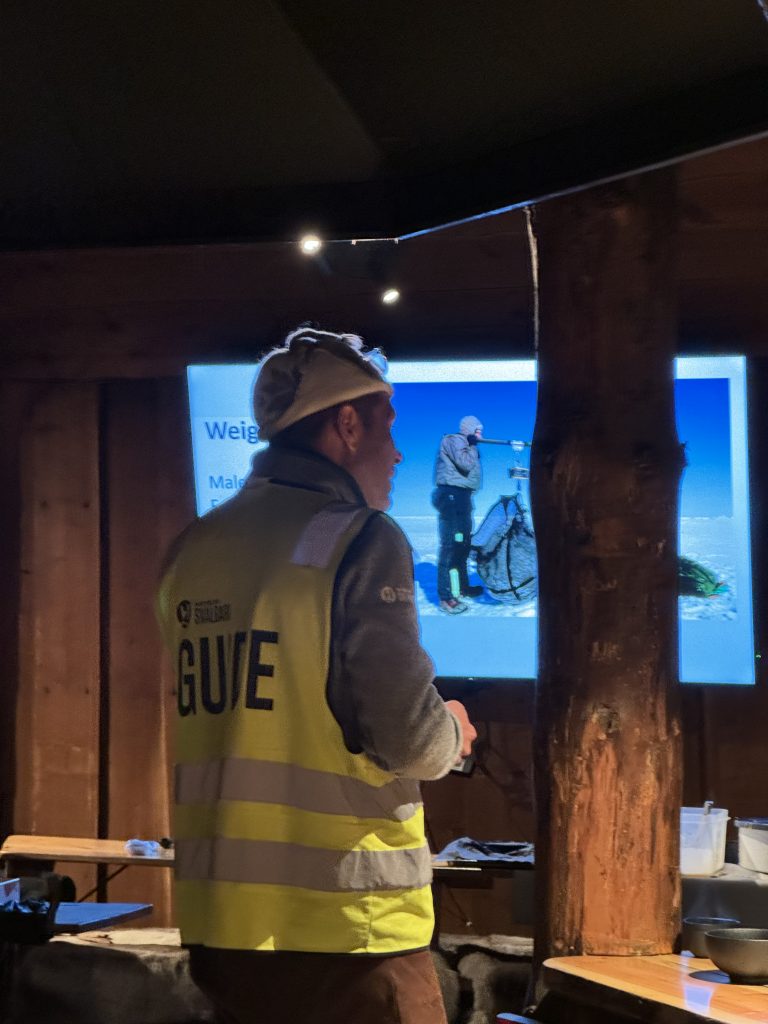
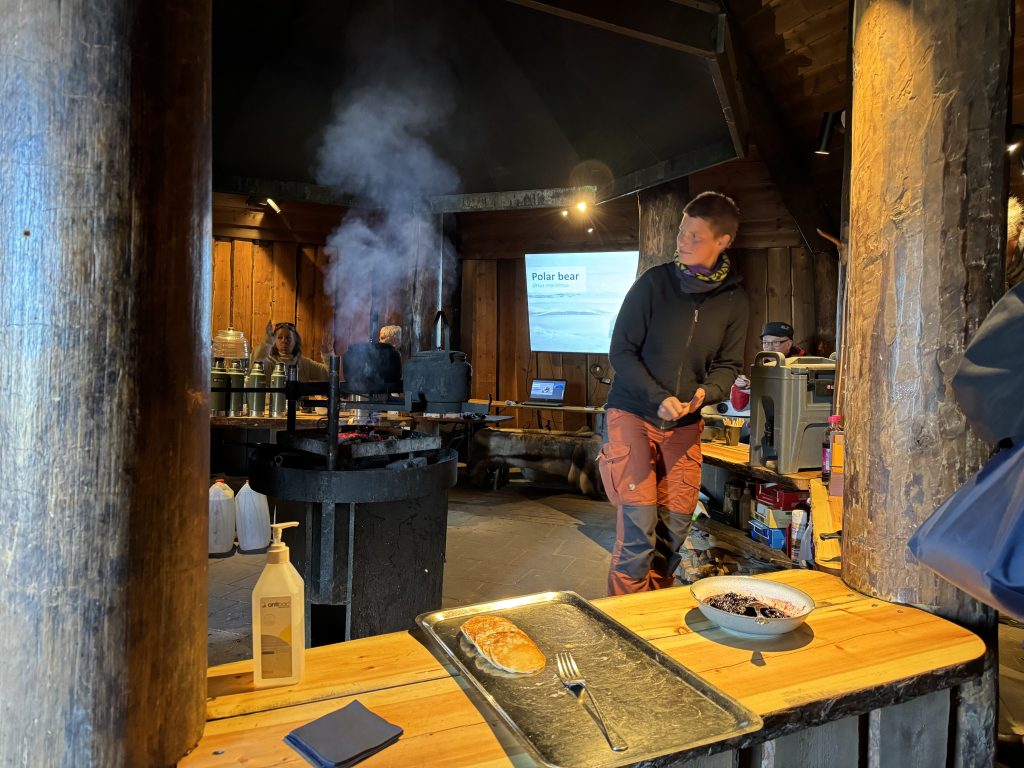
Support SueQsWorld Writing: It’s always optional but your Donation to SueQsWorld writing is more than just financial support; it’s an investment in creativity, diversity and the transformative power of words. Join me in my mission to enrich lives and inspire change. Every contribution, no matter the size, makes a difference. Click on the cute Donate button here, or top right hand side of the page for more information.
When asked if he had been up close to a polar bear, our guide told a story of when he took a group for outdoor activities in Svalbard, camping. They were in the cooking tent when they spotted a young bear – probably in the beginning of its third winter when typically they leave their mothers. It settled down between two of the sleeping tents. They left their tent window flap open so they could keep a good watch on it while they were cooking. It didn’t move so eventually they had to chase it off with some flares. But it only went outside of the camp by around 350 metres before re-settling down again to sleep.
Our guide said they thought it was lonely! After choking on our coffee and pancakes at that comment, we learnt it’s difficult for young adult bears when they first leave their mothers. Double guards were required that night to keep the camp safe. With the bear in the same place in the morning, they headed off to carry out the activities with their guests. When they came back, the food tent had been ransacked and where they had thrown out the dishwashing water was now a very large whole in the ground!
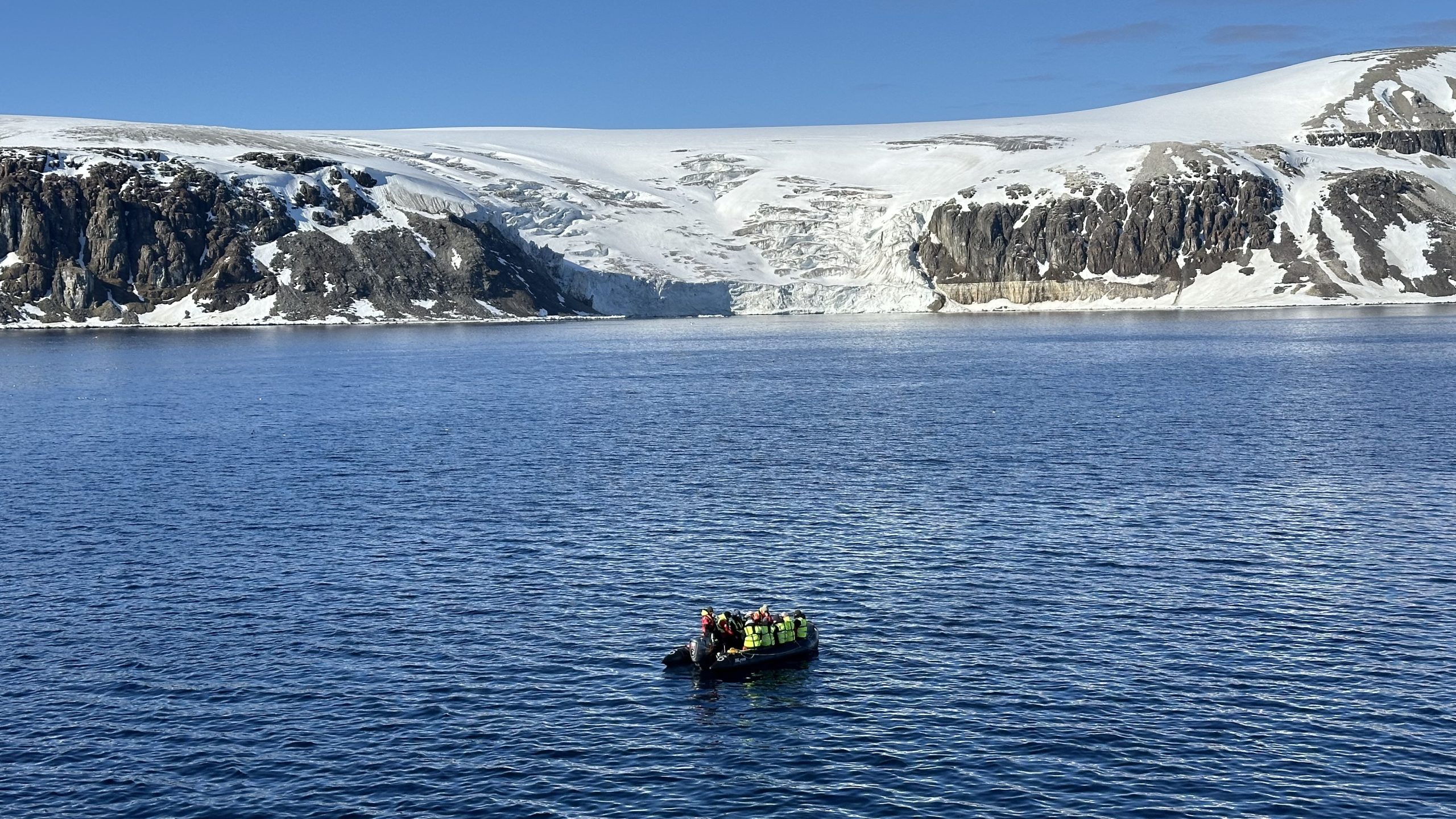
I have to say, it was an inspiring presentation, with fabulous bear photos and cool snippets of local information about the bears seen on Svalbard, plus in and around Longyearbyen. It would have been a great way to start our trip, but safe to say it was a fabulous way to end it.
As a reminder, here are links to some charities you might consider are worth contributing to for conservation and restoration of our polar regions:
The Polar Citizen Science Collective

